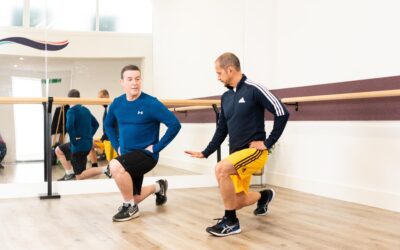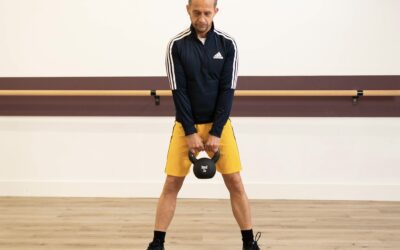Introduction
In the last blog (click here), I outlined 10 different measures of fitness. This included aerobic fitness; specifically, maximal aerobic fitness and long duration submaximal work.
In this article, I take a look at the different types of training methods that we can employ to help us to improve on both of those fitness measures. I will be referring to styles of training, such as continuous exercise, or interval training, rather than the way in which each form of training can be done, for example, running, cycling or swimming. I will choose running for most of my examples, but the principles can be related to other sports. Even though I’m looking at this from a sport and exercise science perspective, the information is primarily aimed at people who are unfit or moderately fit and wish to improve.
Useful terms for background
VO2 max
This is a measure of maximal aerobic fitness. It is the maximum amount of oxygen that a person can use in one minute. The more oxygen that they can use, the greater the maximal aerobic fitness. For an accurate measure of the VO2 max one must undertake a laboratory test on a treadmill or a bike, where one’s expired air is measured. There are methods of estimating VO2 max through maximal test like the bleep test or submaximal tests like the Harvard step test, although their accuracy is debated. VO2 max can be improved through training, but there is a genetic component to it as well, which means that some people are simply born to be aerobically fitter than others.
Lactate threshold
When we burn energy during exercise, byproducts of metabolism begin to accumulate in muscle cells and in the blood. One of these is lactate and it is a byproduct of burning carbohydrate in the form of glycogen, without the presence of oxygen. When we are burning glycogen in this way, it is a sign that we cannot utilise energy quickly enough only using the aerobic system so we have to add in energy provided by the anaerobic system. The body can use this lactate as an energy source, but when it is being produced more rapidly than it can be used it begins to accumulate in the blood.
Blood lactate concentration is easily measured by taking finger prick blood samples from people who are exercising. The lactate threshold is generally considered to be reached when the blood lactate concentration is at 4mmol/l. A person will usually see their blood lactate concentration increase to a level of 4mmol/l when they are exercising at around 70 to 85% VO2 max.
The importance of lactate threshold when it comes to aerobic fitness relates to the exercise intensity that a person is working at when they reach their lactate threshold. For example, at the start of a training phase, a person may reach their lactate threshold after 10 minutes of running at 10km/h. If they then undertake 10 weeks of aerobic training, like the types described below, they may, on a retest, not reach their lactate threshold until they have been running for 15 minutes at 10 km/h. This will likely be because their aerobic training system is more efficient, and they have not had to add in anaerobically produced energy until later in the run. Therefore, it can be said that their aerobic fitness has improved due to the training.

Types of aerobic training
The types of aerobic training fall into one of two categories; continuous training and interval training. Within the interval training category, there are several options, which we will take a look at.
Continuous training
This is a straightforward type of training where a person will run at more or less the same pace for a set period of time. It has also been described as aerobic base training, long slow distance, and steady state training.
The intensity is lower than the lactate threshold, no more than 70% VO2 max, which means that fatigue will not develop quickly, so the exercise can be continued for a reasonable length of time, perhaps for 30 to 120 minutes.
Interval training
Tempo or pace training
In tempo training, the exerciser will work out their race pace. For example, someone who can run 5km in 30 minutes, would do a tempo session at that pace, which is 10km/h. In terms of intervals, they might do three intervals of 15 minutes at race pace with a 1 minute walk in between. The benefit of this type of training is to push the aerobic system at race pace, but without inducing the type of fatigue that a race would bring.
Long aerobic interval training
This type of training is undertaken at a slightly higher intensity than tempo training, and therefore will lead to fatigue developing more quickly. This means that the intervals have to be shorter and the recovery period longer. For example, the same person who did the tempo training at 10km/h, would choose a pace of around 12 km/h and run for only 5 minutes for each of 6 intervals. The recovery time would be 2 to 3 minutes. This higher intensity of work will lead to improvements in aerobic fitness, including some of the adaptations to aerobic training (such as increased fat burning capacity) that I will discuss in the next blog.
Fartlek training
This is a type of training popularised in Scandinavia in the postwar period and is characterised by the athlete undertaking a number of intervals of work and rest, which can vary in time and intensity. This is still done in a planned way rather than being random. For example, the first interval may be 10 minutes at 10km/h with the following interval being 5 minutes at 12km/h and then 2 minutes and 15km/h. The exercise intensity can also be varied by introducing inclines; running up hills!
High intensity interval training
There have been forms of high intensity interval training for decades, but this form of exercise has gained popularity in recent years as a result of research which has shown that some of the benefits of aerobic training can be gained by doing shorter intervals instead of spending more time doing training with longer intervals. In this type of training someone would work at a pace higher than the VO2 max pace, but for only a short period of time, say 1 to 2 minutes. As this will lead to considerable fatigue, the rest period between the intervals is generally longer, perhaps 3 to 5 minutes. The number of intervals will be higher than for long aerobic interval training, with a typical workout consisting of 8 to 10 repetitions. As with the fartlek training, the intensity can be varied by doing different intervals, running on the flat or uphill. Shuttle running or cardio exercises, like jumping jacks or Burpees, could also form part of a high intensity interval training workout.

Summary
Both of the aspects of aerobic fitness; maximal aerobic, fitness and submaximal long duration work can be improved by aerobic fitness training. Continuous aerobic exercise at low intensity will not result in much improvement in maximal aerobic fitness, but will improve the ability for someone to work at a low to moderate intensity or longer periods of time. It is excellent base training.
Aerobic interval training results in improvements in both maximal, aerobic fitness and long duration aerobic work. An effective, aerobic training programme will feature a variety of these types of aerobic exercise.





